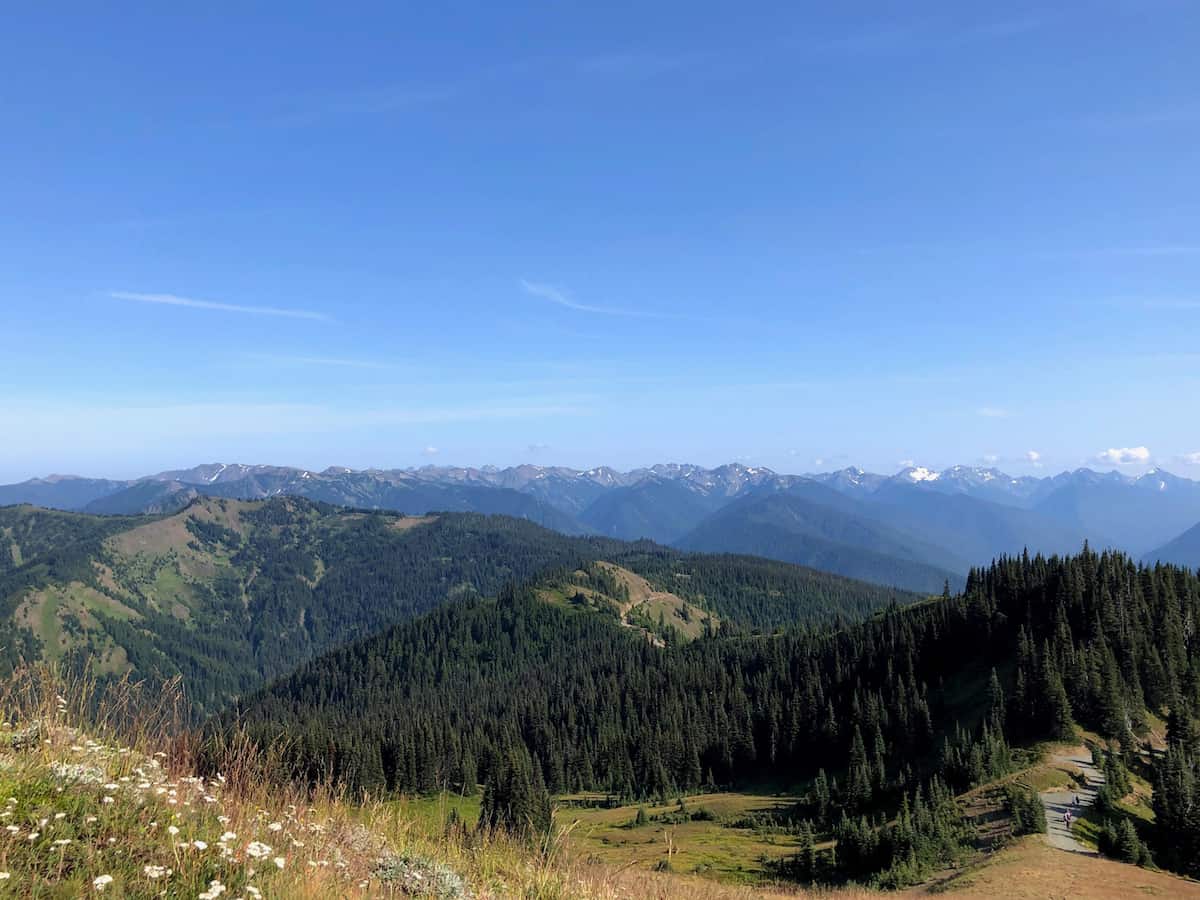
Olympic National Park features several different ecosystems to explore on Washington’s Olympic Peninsula, close to Seattle. From the mountains to the rainforests to the beaches, visitors can explore the outdoors for a few days. During your getaway, you can head to the beach for tide pools, then take a soak in a hot springs pool. Mountaintop hikes through the wildflowers be followed by a kayak trip across a blue lake surrounded by evergreens. Best of all, the ferry ride across Washington’s Puget Sound feels like a scenic cruise. Here is the best 3-day itinerary for Olympic National Park.
Top Things For a 3 Day Olympic National Park Itinerary
-
Start at Hurricane Ridge
-
Have a picnic around Lake Crescent
-
Take a soak in the Sol Duc
-
Explore the Hoh Rainforest
-
Drive to the Beach area of Olympic National Park
-
Explore the Lake Quinault Area
-
Attend a Ranger Program
-
Spot Some Wildlife.
-
Spend the Night in the Park.
Olympic at a Glance
| Year Established: 1938 |
| Located: Washington |
| Size: 1,442 square miles |
| Top Features: Rainforests, Beaches, Lakes and Mountains |
Day 1
Start at Hurricane Ridge
Note: Due to the 2022 fire, the Visitor Center at Hurricane Ridge is closed. The only services at the site are portable toilets and a visitor contact station. Pack food and water, as neither is available at Hurricane Ridge.
If the weather is clear, you can see all the way to the Strait of Juan de Fuca. Hurricane Ridge offers warm-weather hiking and cold-weather snow sports. While there, you can learn about Mt. Olympus (elevation 7,980 ft, 2,432 m) and its glaciers.
From Port Angeles, the drive to Hurricane Ridge takes about an hour. First, you drive through old-growth forests as the road ascends past the tree line. Then, find meadows with wildflowers during the summer or covered in snow in winter.
Find several hiking trails near the Hurricane Ridge Visitor Center. Located 17 miles south of Port Angeles, open daily during the summer. Weekends only during the winter due to snow.
Meadow Loop Trail—Trails from .25 to .50 miles depart from the parking lot.
Hurricane Hill—A 1.6-mile one-way trail that departs from the end of Hurricane Ridge Road. 700-foot elevation gain.
Klahhane Ridge—A 2.8-mile trail that joins the Klahhane Ridge Switchback Trail. Departs from the Visitor Center.
One Day Itinerary for Olympic National Park
Have a Picnic at Lake Crescent Area
Lake Crescent is located 20 miles west of Port Angeles, Washington, along U.S. Highway 101, which rings Olympic National Park. The glacial blue water of Lake Crescent is surrounded by evergreen forests, creating a stunning landscape.
Head to Bovee’s Meadow for picnic tables. Log Cabin Resort offers grab-and-go food, and Fairholme Store sells picnic and camping supplies.
Water Sports at Lake Crescent
Rent a paddleboard, kayak or canoe at Lake Crescent Lodge by the hour or day. Explore the clear lake in the morning for the calmest water.
Boat tours are also available. Departing from Lake Crescent Lodge, the guided tour lasts an hour and a half and requires additional admission.
Hiking around Lake Crescent
Visit Storm King Ranger Station (open seasonally) for information and a starting point for several hikes.
Marymere Falls–A .9-mile one-way trail departing from Storm King Ranger Station for a stunning view of the 90-foot waterfall.
The Moments in Time Nature Trail–A .6-mile loop, perfect for those wanting a shorter hike.
Lake Crescent Lodge offers guided hikes at 9 a.m. a couple of times a week.
Art Programming
Lake Crescent offers occasional watercolor painting groups.
The National Parks of Washington
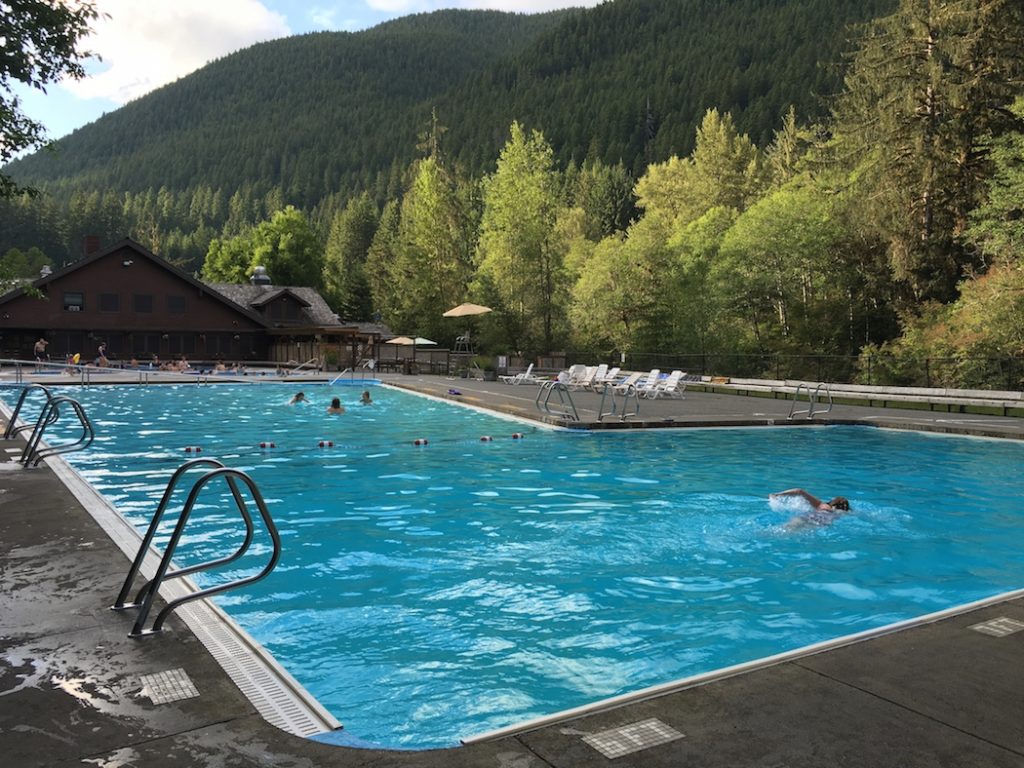
Take a soak at Sol Duc Hot Springs
Enjoy a soak in mineral-rich hot springs during your visit to Olympic National Park. Sol Duc Hot Springs Resort offers a family-friendly environment with a fresh-water swimming pool and three small soaking pools.
Each pool offers a different temperature. The swimming pool’s temperature varies with the season from 50 to 85F/10 to 30C. The largest soaking pool is 101F/38C. The medium pool is 104F or 40C. The smallest pool starts at 99F/37C.
My kids spent the majority of their time in the freshwater pool while I relaxed in the hot springs. I could keep an eye on them while soaking. Kids under 4 must remain in the coolest hot spring pool.
Also find changing rooms, a restaurant, cabins and lodge rooms.
Located at 12076 Sol Duc Hot Springs Rd. Open daily from 9 a.m to 8 p.m. (and 9 p.m. in the summer) from late April until the end of October. Adult admission is $18 and kids 4 to 11 are $12 for one-and-a-half-hour swimming sessions.
During the fall, the Salmon Cascades Overlook offers one of the best places to see the migration of the salmon.
San Juan Island Getaway in Washington
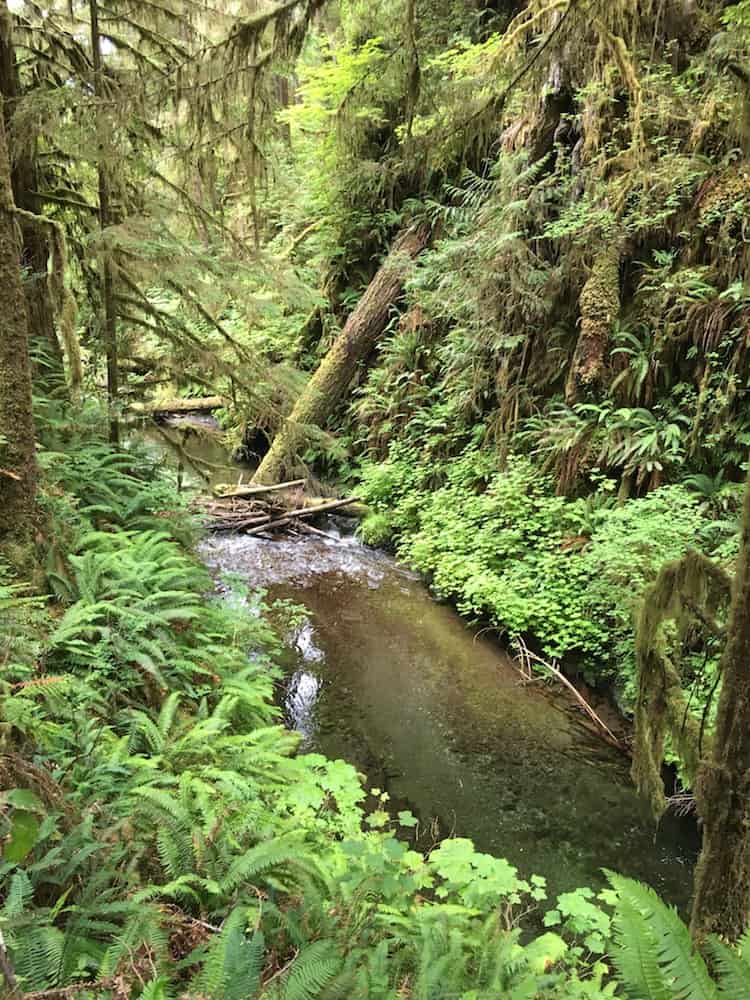
Day 2
Explore the Hoh Rain Forest Area
With 140 inches of annual rain, the conifers and deciduous trees are dripping with green moss. Hiking through the rainforest is the best way to see it.
Hiking in the Hoh Rain Forest
Find two hiking trails near the Visitor Center.
Hall of Mosses Trail—a .8-mile trail
Spruce Nature Trail—a 1.2-mile trail
For longer trails, try the Hoh trails. Both require advance preparation and the use of bear canisters.
Hoh River Trail–a 17.3-mile wilderness hike.
Hoh Lake Trail–a 6.4-mile trail.
The Hoh Rain Forest Visitor Center offers maps and information, but no food. Located at 18113 Upper Hoh Rd. It is open daily in the summer and has varying days and hours for the rest of the year. Closed in January and February.
Best Alaskan Cruises for Families
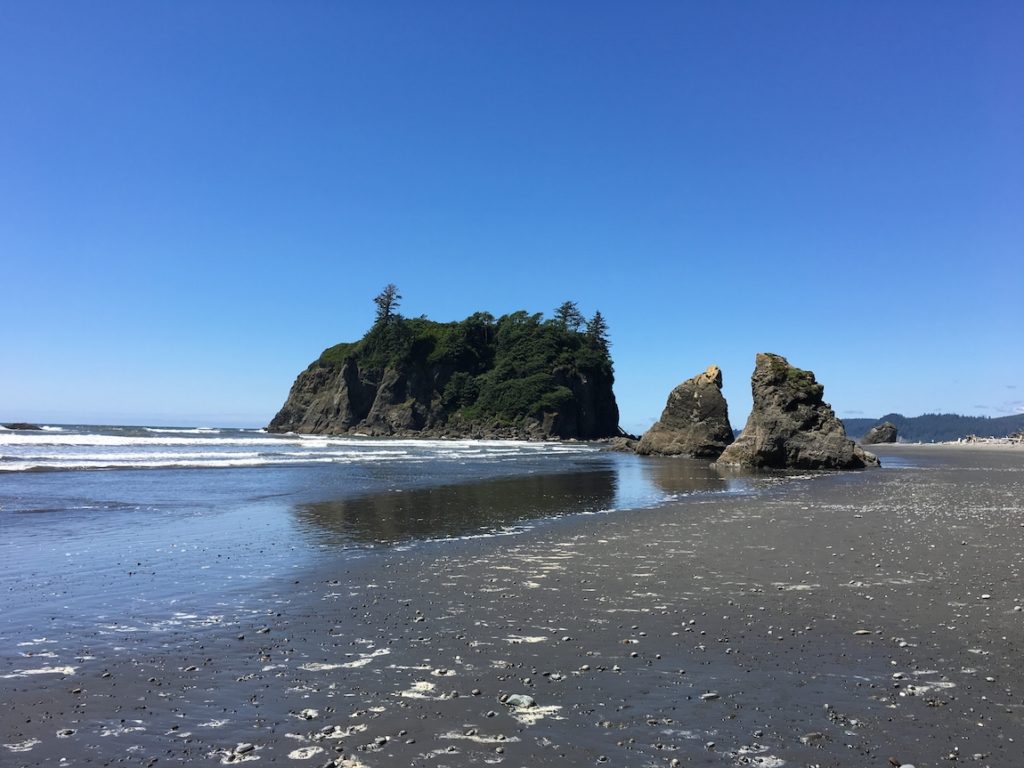
Drive to the Kalaloch Beach Area
Olympic National Park protects 65 miles of the Pacific Ocean shoreline. Spend a beach day building sand castles or flying kites, or learn about Olympic’s unique marine life by visiting a tide pool at low tide.
See whales in the spring and fall from the beaches in Olympic National Park, too.
Kalaloch Ranger Station
Find out about the marine life at the Kalaloch Ranger Station. Rangers lead guided walks and ranger talks during the summer. Check the daily tide schedule for tide pooling nearby.
Located at 156954 US Highway 101, Forks. Open with varying hours and closed in the winter.
Hiking around Kalaloch
Kalaloch Nature Trail—A 1.0-mile round-trip loop, including some stairs. Located near Kalaloch campground.
Beach Trails—Beaches are accessed by beach trails, some with viewpoints.
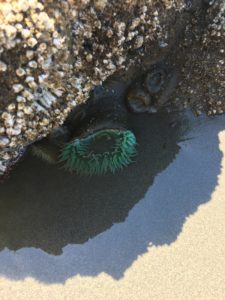
Tidepooling in Olympic National Park
Ruby Beach and Beach 4 offer easy-to-access tide pools. First, look up the low tide and arrive before the peak of low tide.
You might see a giant green anemone that looks like a green flower, ochre sea stars, ribbed Iimpets and acorn barnacles.
Note: Non-slip water shoes are a must. Watch for sneaker waves.
Top Ports of Calls on an Alaskan Cruise
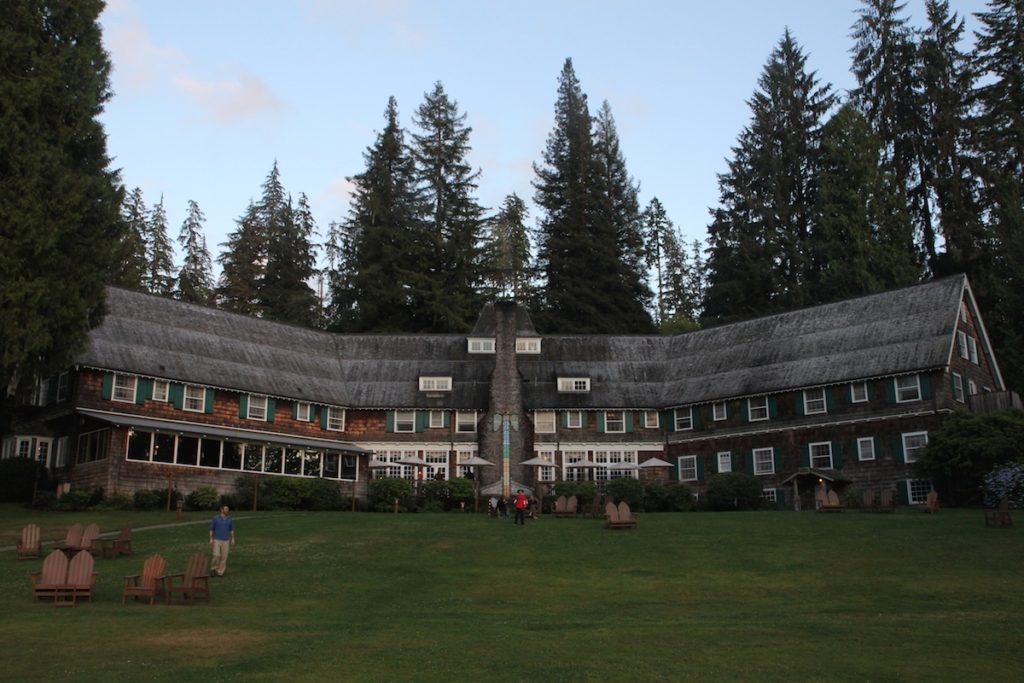
Day 3
Explore the Lake Quinault Area
On the southern edge of Olympic National Park, it meets the Olympic National Forest. The temperate rainforests offer shaded trails dripping with moss in every shade of green.
Take a hike along the rainforest trails, where streams and small waterfalls break the silence of the spruce and cedar forests. Additionally, there are water activities at Lake Quinault.
Hiking around Lake Quinault
Lake Quinault offers trails, a ranger station and a general store for snacks.
Rain Forest Trail–A .5-mile loop
Graves Creek Nature Trail–A 1-mile loop
Quinault Loop Trail–A 4 to 8-mile loop trail
Be sure to hike to the world’s largest Sitka spruce on the .3-mile trail, located near the Lake Quinault Post Office.
Water Sports at Lake Quinault
Rent SUPs, kayaks and canoes for rent by-the-hour or by-the-day at Lake Quinault Lodge. Lake Quinault Lodge also offers three different guided boat tours.
The Quinault Rainforest Tour is a four-hour guided tour available year-round.
Top Mountain Getaways for Families in the West
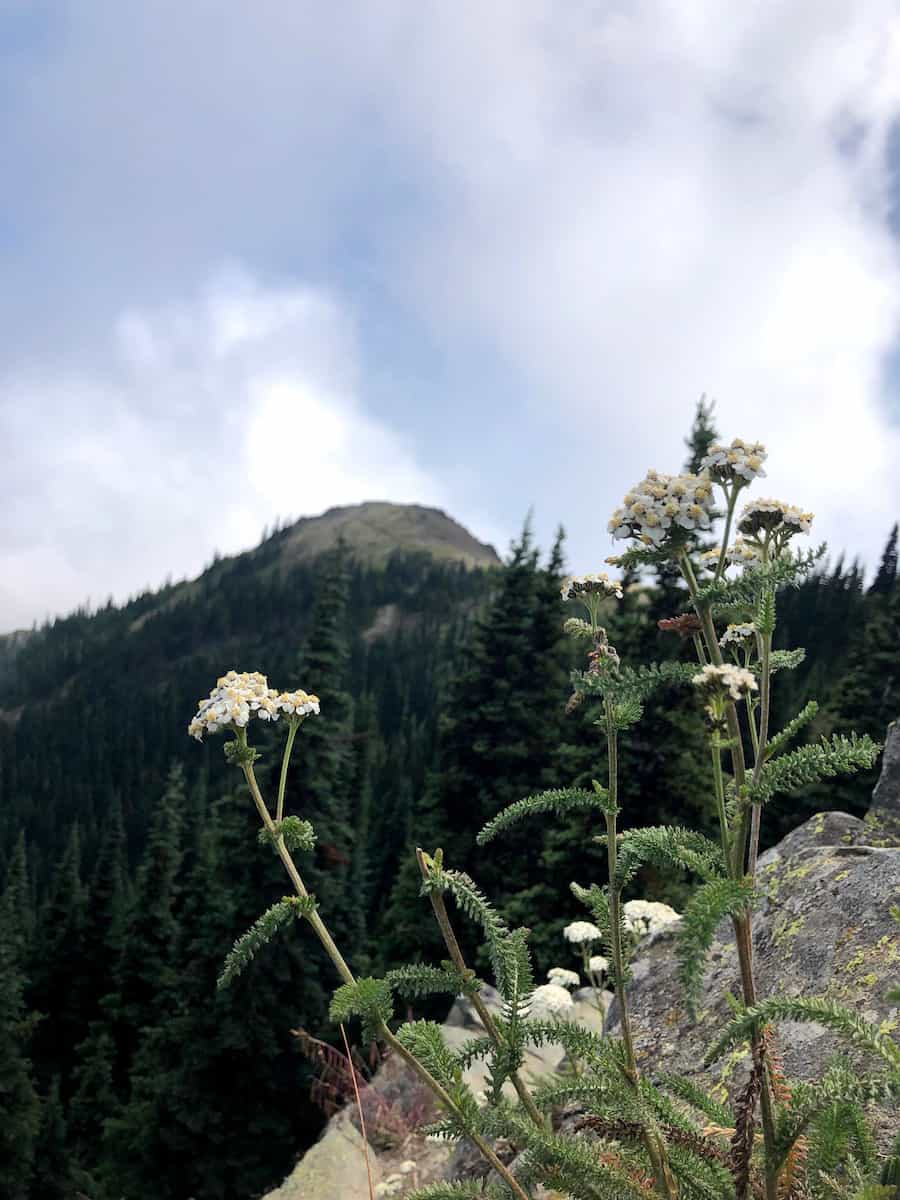
Kids and Pets in Olympic National Park
The Junior Ranger Program allows families to discover a national park site together in about two hours. Olympic National Park offers kids a couple of Junior Ranger patches and badges to earn.
Olympic National Park Junior Ranger booklets are available at visitor centers and ranger stations. At the visitor center, kids can check out a Discovery Packet, a backpack filled with field guides, binoculars and a magnifying lens to explore Olympic National Park more thoroughly.
The Ocean Stewards Patch guides kids 4 and up through the diverse marine life in the park. And kids get a souvenir patch.
The main Olympic National Park Visitor Center offers a Discovery Room for kids to explore. Located at 3002 Mount Angeles Rd.
BARK Rangers
Olympic National Park welcomes pets as long as they practice the principles of the BARK program.
B–Bag waste and dispose of it in the trash
A–Always leash your dog for their safety and others
R–Respect wildlife
K–Know where you can go
Dogs are allowed at the following places in Olympic National Park.
- Peabody Creek Trail (Olympic National Park Visitor Center in Port Angeles)
- Rialto Beach parking lot to Ellen Creek (1/2 mile)
- The beaches between the Hoh and Quinault Reservations (Kalaloch area)
- Madison Falls Trail (Elwha)
- Spruce Railroad Trail (North shore of Lake Crescent)
- July Creek Loop Trail (North shore of Lake Quinault)
Junior Ranger Guide
History of Olympic National Park
People started protecting the Olympic Peninsula in the 1890s when it was first proposed as a national park. In 1897, President Cleveland created the Olympic Forest Preserve, which later became a national forest.
In 1909, President Theodore Roosevelt created the Mount Olympus National Monument, named after its highest point. Then, in 1938, President Franklin Roosevelt created the Olympic National Park. It received its UNESCO World Heritage Site designation in 1981.
Best Beaches across the U.S.
People of the Olympic Peninsula
The first people in Olympic National Park lived close to the rivers, hunting and fishing. The Hoh People live near the Hoh River, the Quileute People live near the Quileute River, and the Ozette People live near the Ozette River.
Also the Makah People and the Quinault People live close to the Olympic National Park.
Animals in Olympic National Park
Wildlife spotting is one of the top activities on any national park adventure. Find the following animals in Olympic National Park.
- Black Bear
- Black Deer
- Roosevelt Elk
- Wolverines
- Cougar
- Mountain Goat
- Olympic Marmots
- Whales
- Sea Lions
- Seals
- Otters
- Salmon
Guide to Oregon National Parks
Weather in Olympic National Park
Pack for rain no matter the season. Snow begins to fall in the mountain region in early fall. The eastern portion of the park is wetter than the western portion.
Spring is temperate, though a bit cool. It’s important to check the road conditions due to rain or snow. Summer is high season with warm, not hot, temperatures and the most sun. Fall sees more precipitation. Prepare for winter travel if visiting.
Find a wide range in temperatures during all seasons since the elevation in Olympic National Park ranges from sea level to nearly 8,000 feet (2,400m). Check the weather forecast before your getaway.
Lodging in Olympic National Park
National Park lodges offer unplugged escapes.
Lake Crescent Lodge—Built in 1915, find lakeside cabins and cottages along with lodge rooms, some featuring fireplaces. Find dining on site. Located at 416 Lake Crescent Rd.
Kalaloch Lodge—With ocean views, choose from lodge rooms in the Main Lodge, cozy cabins and rooms with fireplaces. Find dining on site. Located at 157151 U.S. Highway 101.
Log Cabin Resort—Find lots of log cabins, lodge rooms and a RV park. Find dining on site. Located at 3183 East Beach Rd.
Sol Duc Hot Springs Resort—Find a range of cabins along with a RV park, steps from the hot springs. Find dining on site. Located at 12076 Sol Duc Hot Springs Rd.
Lake Quinault Lodge—Right outside the park in Olympic National Forest. Find dining on site. Located at 345 South Shore Rd.
Lake Quinault Lodge

Camping in Olympic National Park
Deerpark Campground
- June to October only
- 14 sites, RVs not allowed
- First-come, first-served
- Pit Toilets and no running water
Fairholme Campground
- Year-round (opening in Fall 2020)
- 88 sites, some RV sites with a dump station
- First-come, first-served
- Flush Toilets and potable water
Graves Creek Campground
- Year-round
- 30 sites, RVs not allowed
- First-come, first-served
- Pit Toilets and no running water
Heart O the Hills Campground
- Year-round
- 105 sites, some RV sites with no dump station
- First-come, first-served
- Flush Toilets and potable water
Hoh Campground
- Year-round
- 78 sites, some RV sites with no dump station
- First-come, first-served
- Flush Toilets and potable water
Kalaloch Campground
- Year-round
- 170 sites, some RV sites with a dump station
- Reservations accepted in the summer
- Flush Toilets and potable water
Mora Campground
- Year-round
- 94 sites, some RV sites with a dump station
- Reservations accepted in the summer
- Flush Toilets and potable water
Ozette Campground
- Year-round
- 15 sites, some RV sites with no dump station
- First-come, first-served
- Pit Toilets and potable water
Queets Campground
- Year-round
- 20 sites, RVs not allowed
- First-come, first-served
- Pit Toilets and no running water
Sol Duc Campground
- Year-round (opening in Fall 2020)
- 82 sites, some RV sites with a dump station
- Reservations accepted in the summer
- Flush Toilets and potable water
South Beach Campground
- Open in summer only
- 55 sties, some RV sites with no dump station
- First-come, first-served
- Flush Toilets and no potable water
Staircase Campground
- Year-round
- 49 sites, some RV sites with no dump station
- First-come, first-served
- Flush Toilets and potable water in summer only.
Where’s Olympic National Park
Olympic National Park is on the Olympic Peninsula, west of Seattle, Washington. Port Angeles and Sequim offer ferry service from both Washington and Canada.
Quinault Rain Forest Ranger Station at the southern entrance of Olympic National Park is 146 miles from Seattle-Tacoma International Airport (SEA). Hurricane Ridge Visitor Center, in the northeast portion of the park, is 147 miles away from the airport.
Getting Around Olympic National Park
Olympic National Park is open 365 days a year and 24 hours a day. You can purchase an America the Beautiful annual pass ($80) or a 7-day pass for $30 per vehicle.
Olympic National Parks is not a drive-through park, meaning roads don’t bisect it. U.S. Route 101 wraps around the Olympic Peninsula, and park roads dead-end at ranger stations or visitor centers.
No reliable public transportation around the park.
Where to Stay on the Olympic Peninsula
Most national parks are remote, and Olympic National Park is no different. For the largest selection and most comfortable lodging, consider staying in a gateway town. Here, you can find lodging, gas, dining and picnic supplies for your trip.
Port Angeles—Located along Strait of Juan de Fuca, it offers ferry service from Washington and Canada’s British Columbia. Find lodging, dining and shopping along with the Olympic National Park Visitor Center at 3002 Mt. Angeles Rd.
Sequim—Located along the Strait of Juan de Fuca, it’s closer to the Seattle area. Find ferry service to Washington and BC. Find lodging, dining and shopping along with lavender farms in the summer.
Forks—Located near the beach section of Olympic National Park. The NPS Recreation Information Station is located in Forks.
National Park Passes
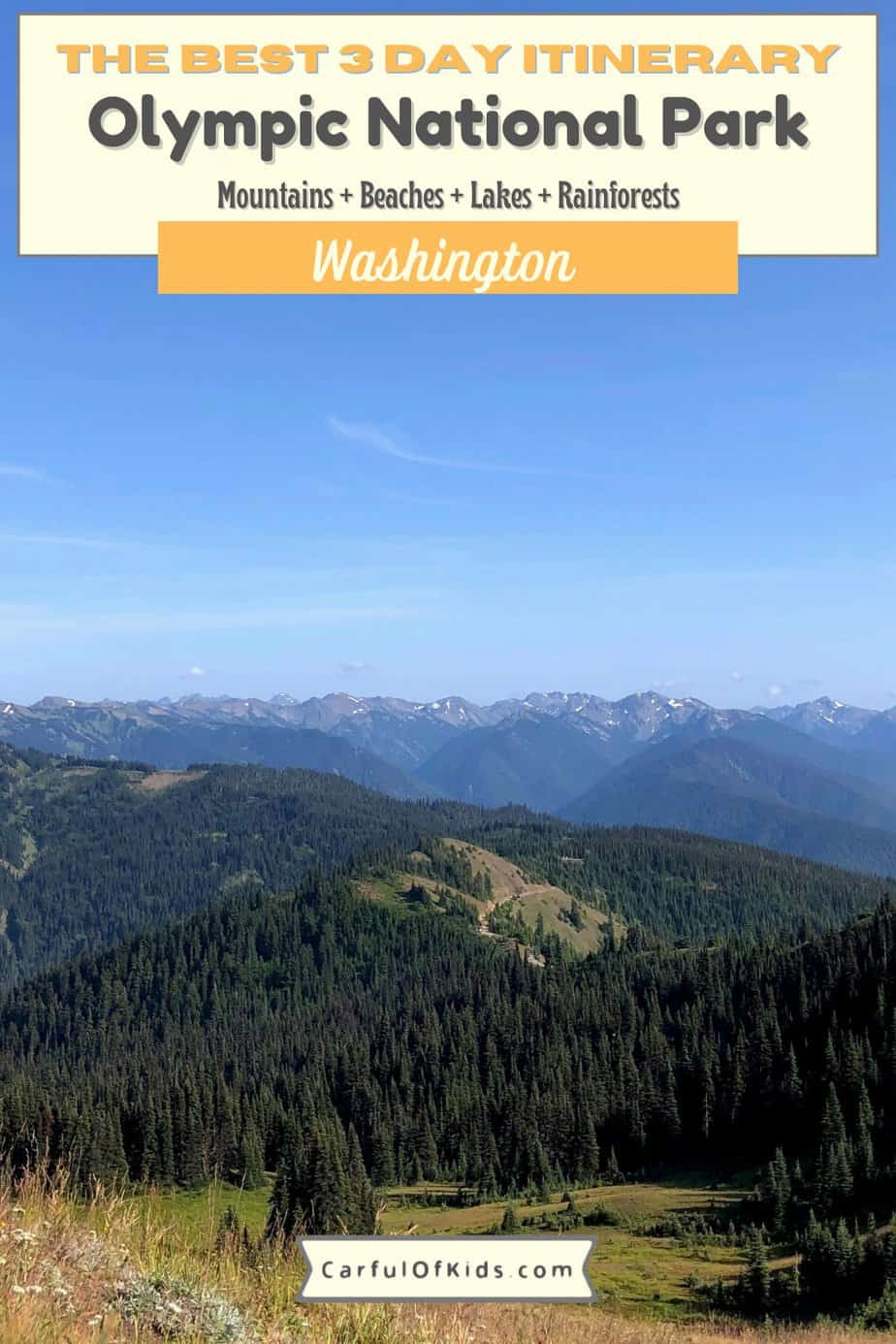

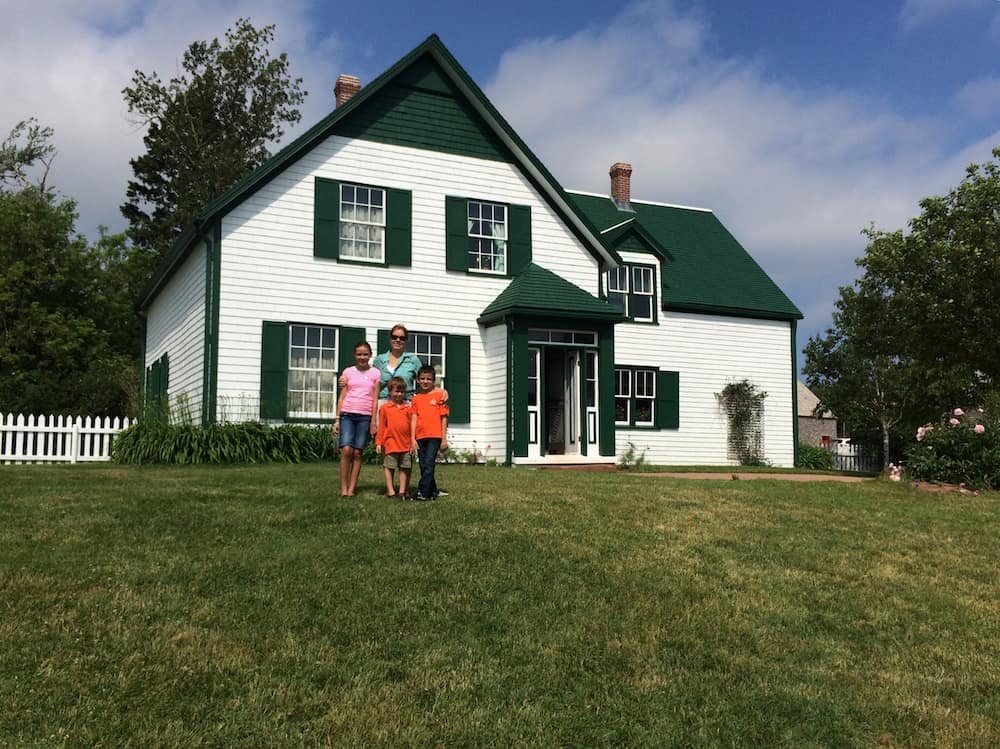
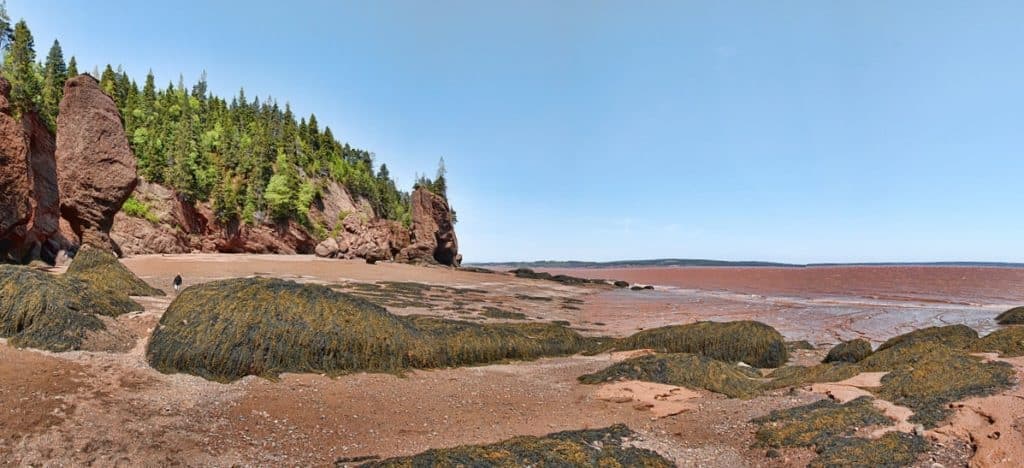
1 Comment
Great article.